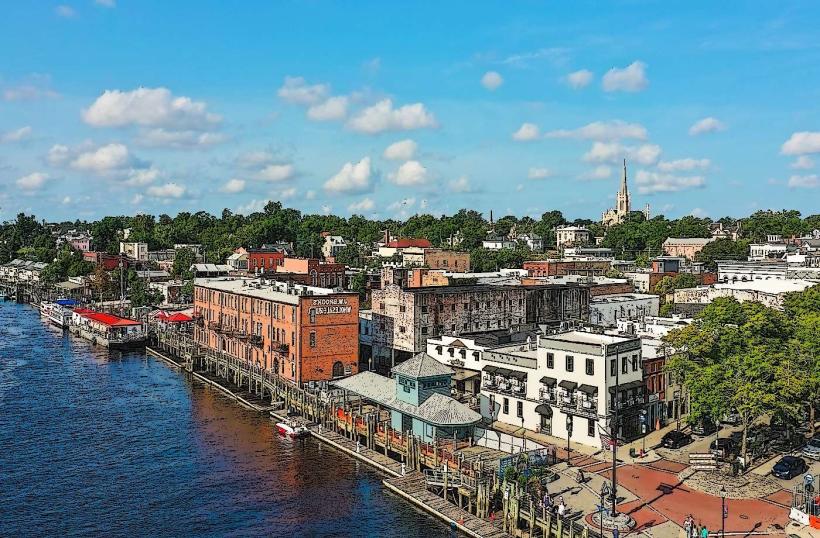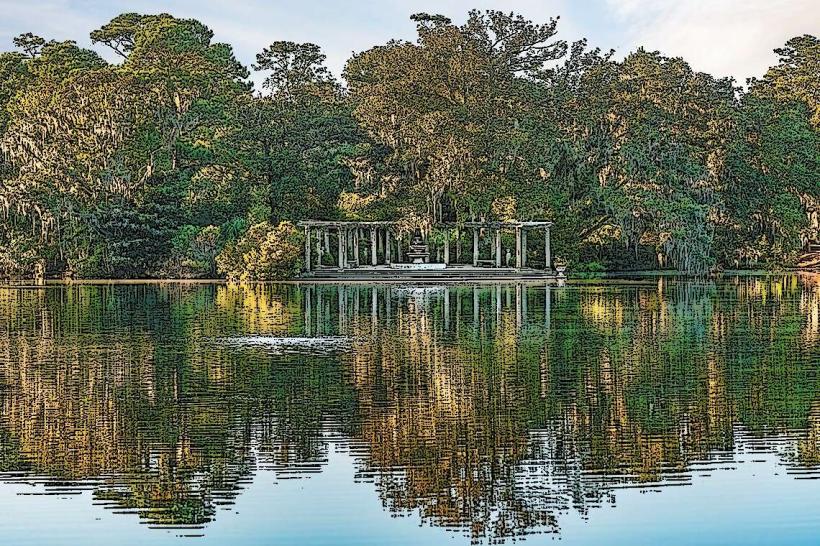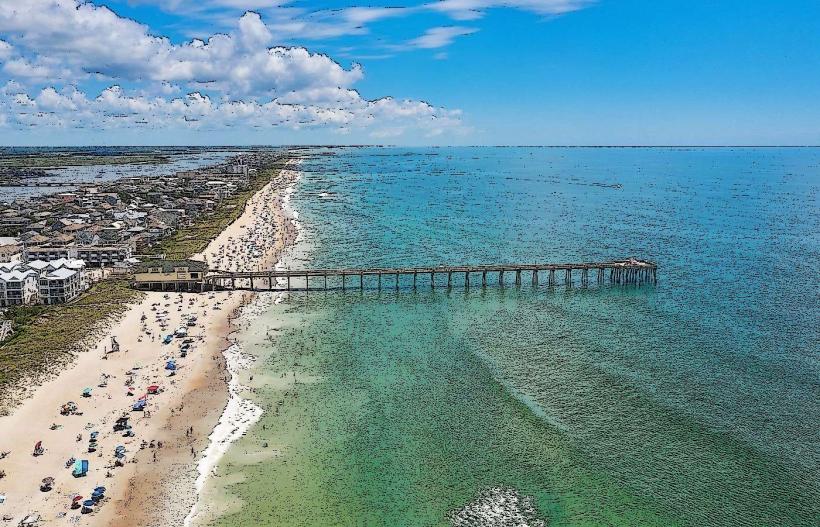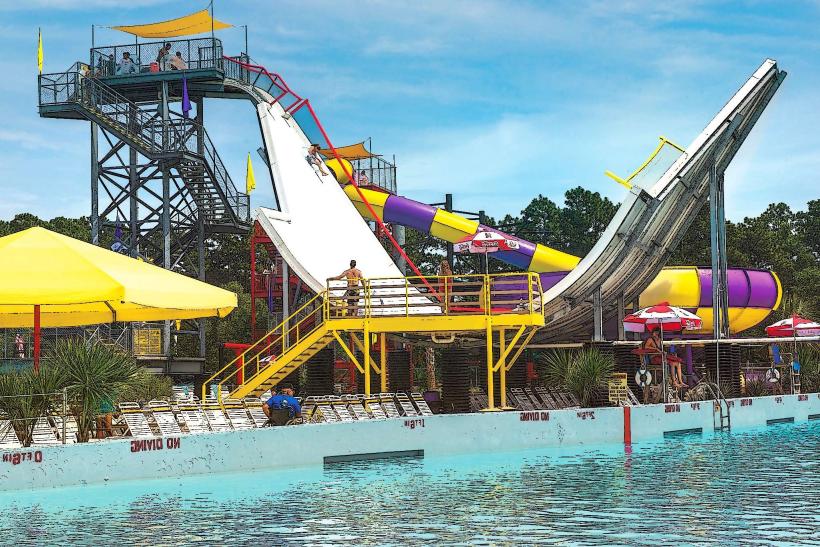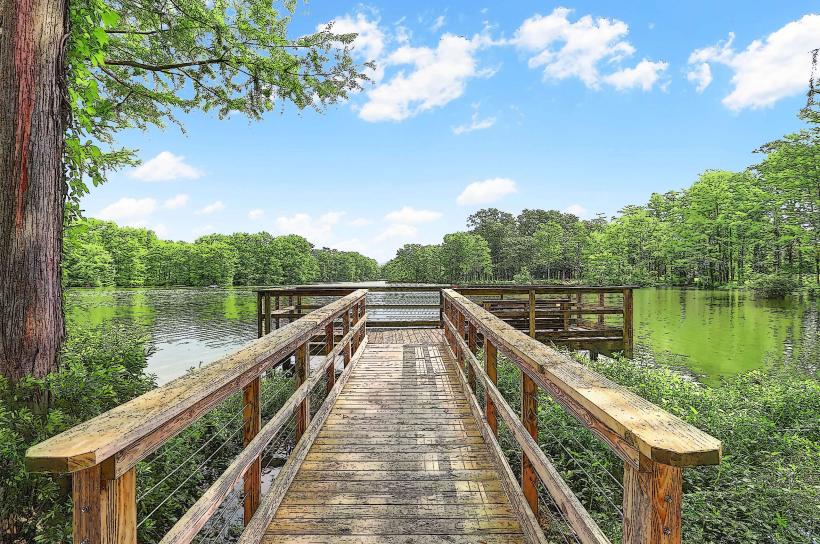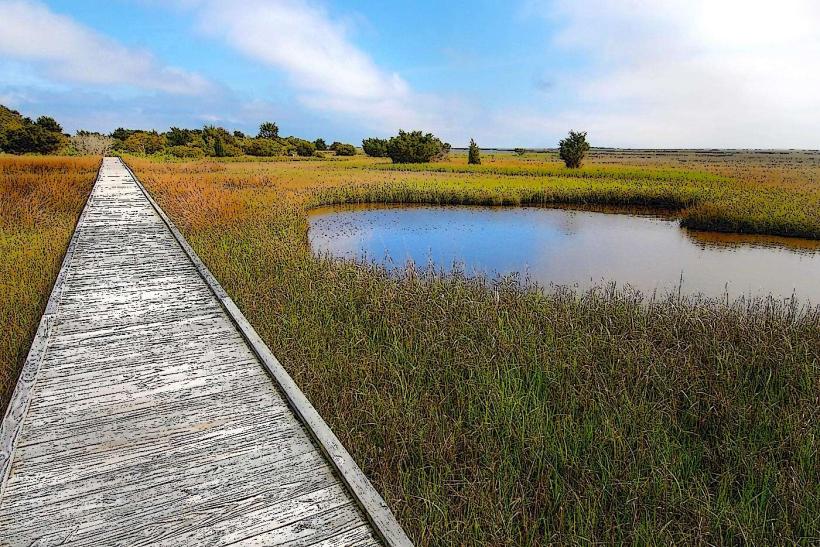Information
Landmark: Masonboro Island ReserveCity: Wilmington
Country: USA North Carolina
Continent: North America
Masonboro Island Reserve, Wilmington, USA North Carolina, North America
Masonboro Island Reserve is one of the most ecologically important and visually pristine natural areas on the North Carolina coast. Situated just offshore from Wilmington and Wrightsville Beach, this uninhabited barrier island is part of the North Carolina National Estuarine Research Reserve system and serves as a vital habitat for wildlife, a research site for scientists, and a peaceful retreat for visitors seeking solitude in nature.
🌍 Overview
Location: Off the coast of southeastern North Carolina, between Wrightsville Beach and Carolina Beach
Size: Approximately 8.4 miles long and about 5,653 acres in area
Management: Co-managed by NOAA and the North Carolina Division of Coastal Management
Access: Only accessible by boat (kayak, canoe, or private ferry)
🌱 Ecological Importance
Masonboro Island is the largest undisturbed barrier island in southern North Carolina. It contains an exceptional range of natural coastal habitats, including:
Tidal Creeks and Salt Marshes: Support for juvenile fish and invertebrates; crucial for water filtration and carbon storage
Dune Systems and Oceanfront Beaches: Act as natural storm barriers and nesting grounds for sea turtles
Maritime Forests: Dense vegetation that provides shelter for birds and small mammals
Subtidal Flats and Seagrass Beds: Serve as feeding and nursery grounds for various marine species
The island's diversity and relatively untouched condition make it one of the best locations in the state for observing natural coastal dynamics and wildlife.
🐢 Wildlife and Conservation
Masonboro Island supports a rich ecosystem of both resident and migratory species. Among the most notable are:
Sea Turtles: It is a significant nesting site for loggerhead sea turtles, with occasional nests from green sea turtles. Nesting season typically runs from May to August.
Birds: Important shorebird nesting and foraging area. Species include oystercatchers, willets, terns, skimmers, and plovers.
Marine Life: The surrounding estuarine waters serve as nursery habitats for species such as flounder, mullet, shrimp, blue crab, and red drum.
Insects and Amphibians: Freshwater wetlands host frogs, salamanders, and dragonflies.
All wildlife is strictly protected, and disturbing nests or animals is prohibited.
🛶 Visitor Experience
Masonboro Island is known for its seclusion and natural beauty. Since there are no roads, buildings, or amenities, it offers a raw and immersive outdoor experience.
Activities:
Boating: Access is only by water. Most visitors launch from Wrightsville Beach, Carolina Beach, or Trails End Park.
Kayaking & Canoeing: Shallow waters and marsh creeks provide ideal paddling routes.
Swimming: The ocean side has clean, quiet beaches perfect for swimming in warm months.
Fishing: Popular for surf fishing and inshore fishing in adjacent creeks and estuaries.
Shell Collecting: Extensive, undisturbed beaches yield excellent seashells.
Birdwatching & Photography: The isolated environment makes it a favorite for birders and photographers.
Camping: Primitive, low-impact camping is allowed but limited to 48 hours. There are no facilities—visitors must bring all supplies and pack everything out.
🛑 Rules & Regulations
To preserve the island’s delicate ecosystems, the following guidelines are enforced:
Leave No Trace: All trash must be removed; littering is strictly prohibited.
Fires: Small campfires are allowed only below the high-tide line in established rings or bare sand areas. No cutting of live vegetation.
Camping: Free, but limited to 48 hours. Groups over 10 people must notify reserve staff in advance.
Wildlife: Do not touch, feed, or harass any animals. Sea turtle nests are often marked; stay clear.
Pets: Allowed, but must be leashed and under control at all times. Clean up required.
Drones: Restricted during bird nesting season to prevent disturbances.
Hunting or Firearms: Not allowed under any circumstances.
🧭 Practical Notes for Visitors
No Amenities: There are no bathrooms, shelters, shops, or potable water sources. Prepare accordingly.
Best Time to Visit: Late spring through early fall is ideal for weather and wildlife viewing.
Tide Awareness: Plan trips around tides to avoid getting stranded in marshes or shallow creeks.
Navigation: Bring maps or a GPS, especially when accessing the marsh side.
Cell Service: Coverage may be limited in interior areas of the island.
🔬 Research and Education
Masonboro Island is also a living laboratory used by scientists and educators to study:
Barrier island dynamics
Sea level rise and erosion
Marine and estuarine ecology
Turtle nesting patterns
Human impacts on natural systems
Educational programs are sometimes hosted for schools and environmental groups through partnerships with local organizations and state agencies.
🏁 Summary
Masonboro Island Reserve is one of the last undeveloped barrier islands on the southeastern coast of the United States. It is a rare sanctuary where natural processes occur largely undisturbed by human development. For those with a passion for coastal ecology, wildlife, solitude, or unspoiled beauty, it offers an unmatched experience in North Carolina’s coastal region.


